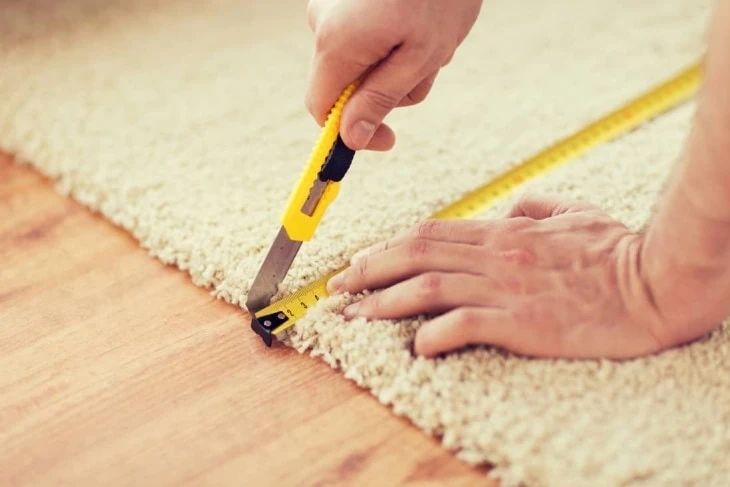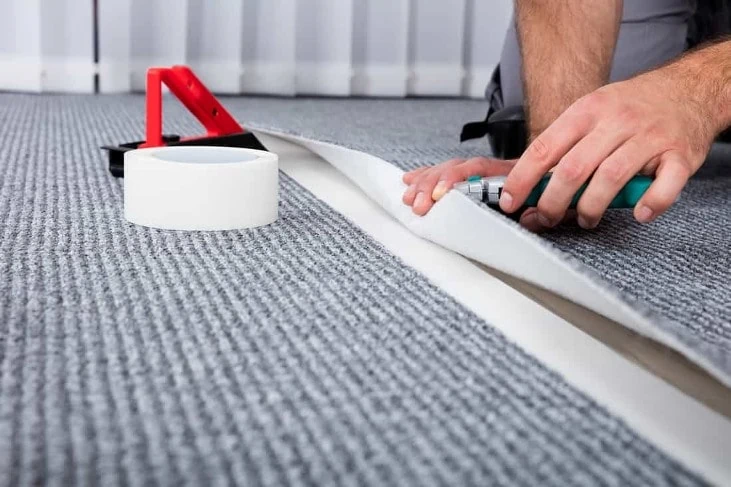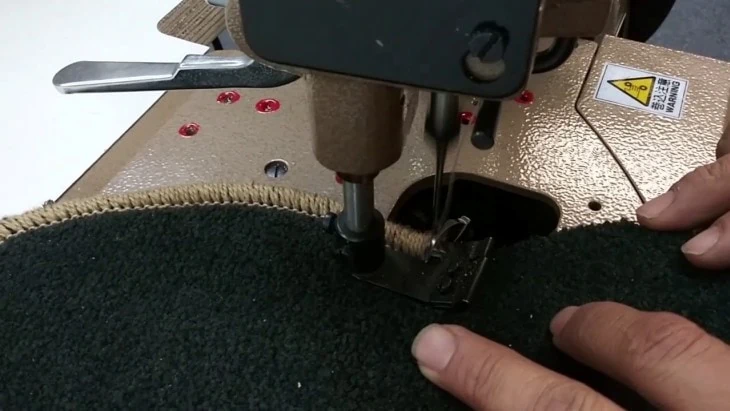Fraying is one of the biggest problems you can run into when cutting a rug. If you’re not careful, you can easily ruin an otherwise good rug by leaving it with frayed edges.
While the problem might not look bad right away, it can eventually cause the whole rug to fall apart.
Cutting a rug without it fraying comes down to using a sharp cutter and applying enough force. Using a hard object like a plank as a guide can also help you get a good cut. You should also go over all edges once you’re done cutting to ensure there are no frays left.
Table of Contents
Invest in a Sharp Cutter

Knowing how to cut a carpet without fraying is mostly about using the right tools and knowing how to use them properly. A sharp cutter can make all the difference, as it will run straight through the rug without dragging any threads along with it.
On the contrary, a dull cutter will tug on the edges all the time as you’re running it along them. It will also not cut all threads equally, leaving some sticking out. That’s a quick way to end up with lots of frays.
If you already have a cutter that you like using, try sharpening it yourself. This can save you some money if you don’t want to buy a new cutter altogether.
Cut with Force
Another important point is to apply a lot of force when making the cuts. Using a sharp edge is only one part of the equation. You must also make the cuts with confidence and apply enough pressure to ensure the cutter will glide through smoothly.
If you hesitate even for a second, you can easily ruin the entire cut. It can be difficult to resume a cut from a midway point while maintaining the original direction. That’s why you should measure your cut several times and only cut when you’re sure that you’ve got it right.
Make sure your rug is on a protective surface before you begin! Even if you have a durable floor, you don’t want to risk damaging it by running a sharp cutter and pushing hard on the floor.
Use a Guide

A wooden plank or something similar can work great as a guide. It can be helpful in ensuring that you’re cutting in the right direction without straying too far. It can also help you apply more force during your cuts without fear of accidentally slipping off the right path.
Make sure that whatever you use for a guide is durable enough to withstand the cutter moving alongside it. Wooden planks are suitable if they’re made of hardwood or something similar. Otherwise, you might want to use a guide made of metal or another strong material.
Cut Out Any Leftover Threads
If you have any threads still sticking out from the edges, carefully go around the entire rug and remove them one by one. This requires a more delicate approach compared to making the initial cuts.
Pull on each thread before cutting it to ensure that it’s not longer than it seems. Keep the thread extended as you make the cut. Do this for each thread you find sticking out from any of the edges.
This can take a while, but it’s an important step in ensuring that your rug will look good in the end. It doesn’t matter if you choose to bind the edges or not. You will still benefit from removing any leftover threads before moving on to the next step.
Bind or Serge the Edges

Once you’ve figured out how to cut a rug to size and keep its edges from fraying during the cutting process, you should also look into binding or serging them. This can improve the durability of the rug and also make it look nicer.
Some people are against serging as they believe it lowers the appeal of most rugs. That’s not always the case though, and it mostly depends on how well the serging is executed. Take a look at some tutorials using different materials and you’ll see various good-looking examples.
Always use quality materials for binding if you choose to go with that option. High quality carpet glue can make a huge difference in how well the final result comes out and how long it lasts.
If you’re not confident in your own skills, it can be worth taking the rug to a professional for that final step.
Closing Thoughts
Now that you know how to trim a rug without having the edges fray, you should practice on a less expensive piece before proceeding to the ones you actually want to cut.
There are some tricks in the cutting process that can take some time to get the hang of. And you don’t want to practice them on rugs that you would regret losing.


It wasn’t made clear whether this process of cutting a rug or carpet could be used on any type of carpet e.g. acrylic shagpile et cetera. Is it expensive to have this done professionally? I need to make a very large rug slightly smaller.